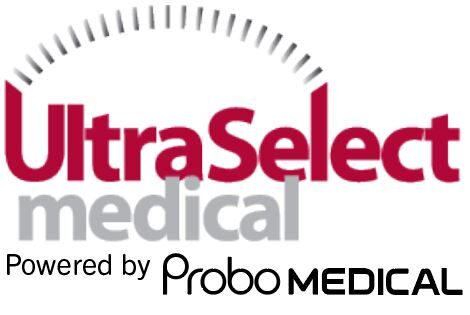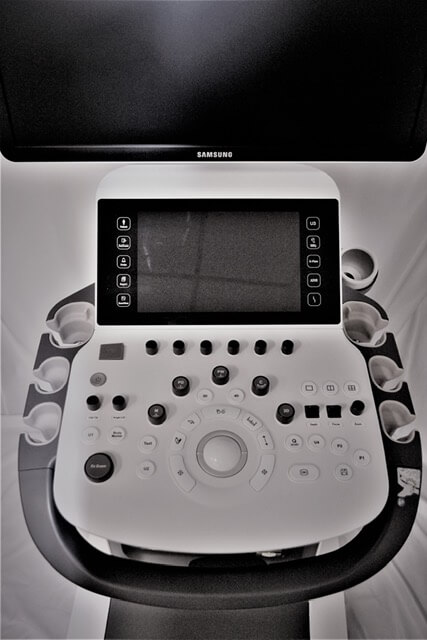Today’s world is full of information and all sorts of opinions. Here you will find the up to date information and opinions based on actual use of the machines and transducers. Our data is gathered from our service department, our long standing customers, applications and our management team. We will look at image quality, ease of use, features and price. The top choices are the GE Voluson E8, Mindray DC 80 and the Samsung WS80A Elite.
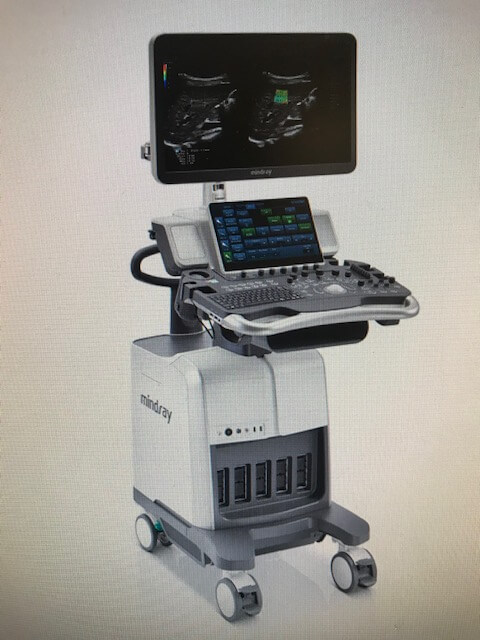
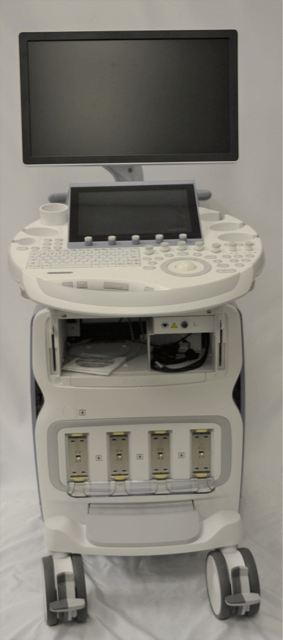
Image Quality
This category is subjective. The images should be clear in all modes. Cystic structures and amniotic fluid should appear as black as the black background on the monitor. Anything truly cystic must have clearly evident posterior enhancement. Echogenic parts will be bright white with posterior shadowing.
All soft tissues ought to have clear boundaries and be easily recognizable as the tissues they represent. The higher the signal to noise ratio the clearer the images will be. It has to be mentioned that the size of the patient and any abnormal conditions will affect the image quality. In side by side comparisons, Mindray has the best image quality. Then GE, then Samsung is a close third.
Ease of Use
In the fast paced environment that medical professionals face today, ultrasound manufacturers have made a valiant effort to lessen the amount of adjustments we need to make to give an acceptable image. We are marching toward the AI one button imagery. We looked at how much adjustment was needed to get a good image and how much time that process took in all imaging modes. There are other things like ergonomics, panels layouts and reporting that are factored into ease of use. Mindray wins this one again. Mindray has the easiest customization across the board. Samsung is a close second. Samsung has decreased the buttons and the amount of adjustments in all modes with GE being third. GE has lessened the buttons but the processes themselves have not changed significantly.
Features
The features are sometimes referred to as options. Some of these are standard across all manufacturers and some are purchased based on the customer’s needs.
The standards include things like 2D optimizing properties; HD Live, iLive, Crystal Vue and Harmonics. Then there are the m-mode, Pulsed Wave Doppler and Color flow Doppler standard usage. The 3D and 4D are a must for OB imaging. Then there are the artificial intelligence (AI) driven options. These are (GE) Smart Face, Sono CNS, Radiant Flow, Fetal HQ and with XDCLear –the XDClear probes. On the Mindray there are the Smart Planes CNS, Smart NT, Tomographic Ultrasound Imaging, 3D depth on VR, Smart OB, Smart 3D, and with the XInsight and combowave probes. With Samsung there are the 5D CNS with nine planes, Crystal live 3D, Biometry Assist, 5D long bones, 5D Heart color and 5D NT. In this category Samsung takes the lead with GE and Mindray tied for second.
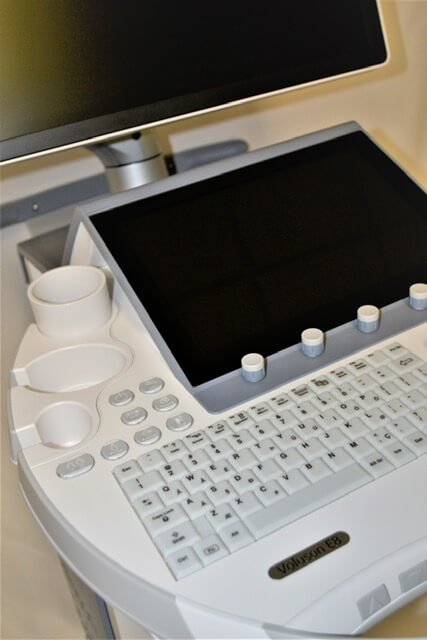
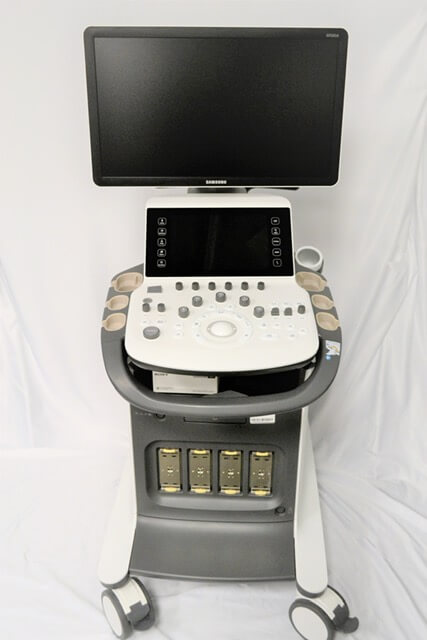
Price
This category is last because it is not the single factor in how customers purchase. It is certainly a top consideration. There are other things to look at to cut down on the price. Would you consider a used, demo, refurbished system? All our machines are sent through a rigorous twenty five point check out regardless if they are new or not. This happens in the service department. Then all machines are put through an applications check out when they are sold. For this category the price only reflects the new machines with all options and features. The transducers are normally above and beyond that price. You can also cut down on the price by purchasing used or refurbished probes. Also consider what printers you need because that adds to the price as well. Things like DICOM may or may not be standard. CD, DVD, and USB are built in and are usually standard. There are rare exceptions to that rule. Here we go, GE is the most expensive, Samsung comes in second and Mindray a far third. Now you are armed with everything you need to make a good decision.
IF YOU HAVE ANY QUESTIONS PLEASE CALL US 843-566-1020.
